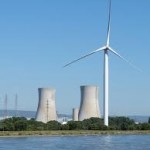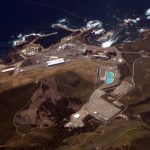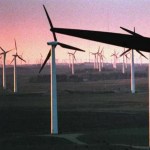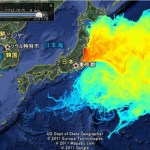nuclear power
I just read an interesting piece on the widely influential VOX, by David Roberts, called “A beginner’s guide to the debate over 100% renewable energy.” It is worth a read, but I have some problems with it, and felt compelled to rant. No offense intended to David Roberts, but I run into certain malconstructed arguments so often that I feel compelled to promote a more careful thinking out of them, or at least, how they are presented. Roberts' argument is not malconstructed, but the assumptions leading up to his key points include falsehoods.
I’m not going to explicitly disagree with the…
The decision by PG&E to mothball the last operating nuclear reactors in California has some people cheering—and other pounding their fists. On Significant Figures, Peter Gleick writes that the closure of Diablo Canyon Nuclear Plant "rankles those who see all non-carbon energy sources as critical in the fight against the real threat of climate change." Yet Gleick argues that with the pitfalls of nuclear energy and the high costs of retrofitting the plant, it is appropriate to shut it down and focus on developing wind and solar capacity. Meanwhile, Greg Laden considers the risk a major…
Diablo Canyon Nuclear Power Plant, courtesy PG&E
The announcement that Pacific Gas and Electric (PG&E) will close the Diablo Canyon Nuclear Plant when its current operating licenses expire in 2025 has caused what can only be described as consternation mixed with occasional conniptions among the nuclear industry and some strongly pro-nuclear groups.
That’s understandable. Diablo Canyon is aging, but is not the oldest nuclear plant in the fleet and PG&E could have chosen to push for a renewal of the license to continue operations for many more years. Diablo Canyon’s two reactors…
by Anthony Robbins, MD, MPA
The final closing of the Vermont Yankee Nuclear Power plant in Vernon got few headlines outside Vermont, but for me it brought back a flood of memories and an important lesson. I am convinced that public involvement with nuclear power in Vermont was a factor preventing an accident over the plant’s life of more than 40 years.
From 1973 to 1976 I was the State Health Commissioner, and, due to a strange set of historical circumstances, Vermont had a special relationship to its nuclear utility. The Health Department took the lead for the State, assigning one full-…
The Age of Radiance: The Epic Rise and Dramatic Fall of the Atomic Era by Craig Nelson (author of Rocket Men: The Epic Story of the First Men on the Moon) is a well done history of the atomic age. If you are a bit squeamish (justifiably I'm sure) about the nuclear industry or nuclear stuff generally you'll find Nelson's dismissal of your concerns as the product of a public relations fail on the part of the nuclear industry to be patronizing and annoying, but there isn't too much of that in the book, and he's partly right; most fears people have about nuclear energy are not especially accurate…
TEPCO was going to start removing the fuel rods from the less-damaged reactor building Numnber 4 over the next few days. Today, it was announced that damage to the fuel rod assemblies, some or most of which predated the tsunami and earthquake, this could not be done. There is now uncertainty as to what is going to happen.
Here is a video by Fairewinds about this operation, which I believe was made before TEPCO decided to not continue with the removal at this time:
As you can see, there are several possible problems. Most of these problems are not related to the reasons TEPCO has given to…
Patrick J. Kiger at National Geographic News has an excellent summary of the current situation at Fukushima Daiichi Nuclear Power Plant. The plant continues to leak radioactive material into the sea, though at a rate much lower than the massive release that happened at the time of the accident. Strontium-90 (Half-life 28.79 years) has increased in proportion over various Cesium isotopes. This is a concern because while Cesium has the potential to enter the food supply in fish that pick it up, Strontium enters the food supply in a different way. In theory Cesium enters tissues and leaves…
James Hansen, the famous climate scientist and author of Storms of my Grandchildren, talks about the possible role of nuclear power in addressing climate change, and in particular, reducing the release of fossil carbon into the atmosphere.
I think he is far to pessimistic on the use of solar and wind energy than he needs to be and notice that he, and no one else ever, seems to mention geothermal, which could reduce our release of carbon by double digit percentages using existing technology in a few years. Having said that, there is probably no way to solve our energy problem without…
On March 11th, 2011, the Fukushima Daiichi nuclear power plant complex suffered damage from an earthquake and ensuing tsunami that caused multiple nuclear reactor core meltdowns and melt-throughs, explosions, and major releases of radioactive material into the air and the sea. In addition to the reactor meltdowns and melt-throughs spent fuel storage tanks were also damaged and probably contributed to the release. It took about a year for the plant to reach a condition that was stable enough that we stopped checking it every day to see if new bad things were happening. Heroic efforts were…
Wind power is like Ginger Rogers. You know what I mean. It isn't judged by the same standards as other kinds of electricity generation.
Click here to visit an interactive guide to wind power in Minnesota.
I'm speaking specifically of the reliability of, or variation in, wind over time. Many people live in places where they personally experience highly variable wind, or at least, think they do, so it is easy to assume that wind generators would be sometimes running on full, sometimes standing still, in a more or less random and unpredictable way, but this is not necessarily true. There are…
The Fukushima nuclear power plant was opened to journalists for the first time; See below for numerous links to related stories.
There appears to be very high levels of radiation at Fukushima plant reactor #3, and at either reactors 1 and 3, or both, nuclear fission may have been occurring in the melted down remains. Ideally, once a plant is turned off, i.e., control rods inserted etc. etc., the state of "criticality" is stopped and there is no more fission, or at least, only a small background level. But, if a nuclear power plant's core melts down, nuclear material can re-accumulate in…
One of the interesting items we have this week is a study by Greenpeace in which various organisms from the sea near Fukushima were sampled for radioactive isotopes. Let's take a closer look.
The data in the table provided (see the first item in Ana's feed for the link) show the amount of radiation (radioactive decay) by isotope type per kilogram of plant or animal tissue from various samples. On the higher end is a fish with 357 bq/kg of radiation and some seaweed with 190 bk/kg.
What does this mean? Hard to say. I can tell you this: A normal human has about 4,000 or more bq (in total…
Way back when I was just a novice environmentalist, Greenpeace seemed like a good idea. It published a decent newsletter, was drawing attention to otherwise neglected issues, and, while understandably suspicious of technology, seemed to have more than a grudging respect for science as a tool to preserve those things worse preserving. It was one of the few NGOs that received what little I could afford to donate to charitable causes. I don't regret supporting them in the 80s, and not just because I shared the group's desire to save the whales.
I still want to save the whales. I no longer…
We can't seem to stop thinking about nuclear power. Given what's at stake -- the biosphere, the economy, our genetic integrity -- this is understandable. But I think too many are getting distracted from the fundamental problem with splitting atoms and arguing scientific questions we are unlikely to resolve anytime soon.
Much of the recent hand-wringing is a reaction to George Monbiot's quasi-conversion to a nuclear power advocate. His latest column, Evidence Meltdown, practically radiates scorn for the "anti-nuclear movement," which he manages to reduce to a monolithic cult led by Helen…
The Oil Drum has a well-referenced, thoughtful summary of the present situation at Fukushima - bad and getting worse as it gets harder and harder for workers to get close to the facility. The word "entombment" has been mentioned - which may be the only viable outcome. More than a million Japanese people risk losing their homes for a very long time, if not for good.
There are a lot of discussions of the future of nuclear power out there. Most of them don't assume declining other energy resources, however. The emerging assessment I see is that while modern nuclear plants are much safer,…
I'm almost weary of blogging about nuclear power. But others are still going strong. Take the Globe and Mail's Doug Saunders, who writes this week that we shouldn't even think of abandoning the technology. Such enthusiasm is particularly curious because he glosses over the Achilles heel of nukes -- the cost -- and Canada has one of the most expensive varieties of nuclear reactors around.
I can only assume that Saunders hasn't done enough research, because if he had he would never come to conclusions such as this:
It may be possible in Europe and North America to talk about reducing consumer…
There's an amusing little video making the rounds, and receiving a largely positive response. Which is unfortunate, because it's little more than government-industry propaganda that glosses over the colossal abrogation of responsibility that led to the Fukushima crisis.
At first glance, the cartoon does an exemplary job explaining the situation to Japanese schoolchildren too young to understand half-lives and the role of water as a coolant and moderator in boiling-water reactors. But there's a gaping omission right at the beginning. Nuclear Boy has a stomach ache. No kidding. Why? This is…
How nuclear power is perceived by the general public will take decades to return to what it was a week ago. (Kind of like radioactive decay.) But the list of immutable and defining characteristics of the technology is long one and nothing that happens in Japan is likely to change them. First up: the daunting economics.
Each gigawatt reactor costs upwards of $14 billion these days. And climbing. As the increasingly useful Climopedia at Climate Central puts it: "the question on many peoples' minds today is not what the last nuclear power plant cost, but rather what the next nuclear plant will…
The journal Nature inadvertently (I suspect) reveals why the nuclear power industry has a public-trust problem:
Robin Grimes, director of the Centre for Nuclear Engineering at Imperial College London ... says that he believes the [Fukushima] event actually proves the safety of nuclear power plants. Despite being more than 30 years old, and having faced the largest earthquake ever recorded in Japan and a towering tsunami, the reactors at Fukushima Daiichi have, so far, largely contained their dangerous radioactive fuel. "Actually, it's a success," Grimes says, then adds: "Although do I think…
At one end of the hyperbole scale we have Helen "If you love this planet" Caldicott, who raises the specter of "cancer and genetic diseases" if things get any worse at the growing list of nuclear power reactors crippled or destroyed by last week's earthquake in Japan. At the other we have Republican congressman Mitch McConnell, who argues that we shouldn't abandon nuclear power, especially "right after a major environmental catastrophe."
In between the pundits and genuine experts are pointing out that the mining, processing, and burning of fossil fuels kill hundreds or even thousands of times…





